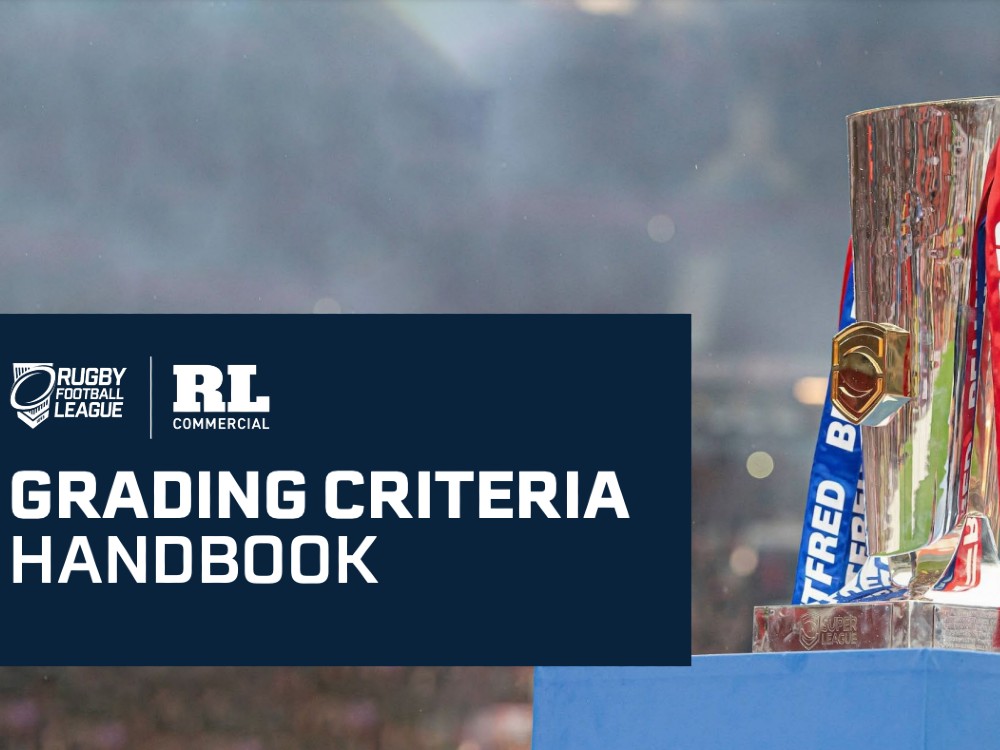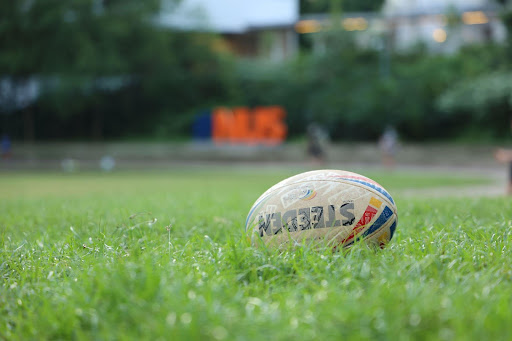Widnes Vikings chairman Stuart Murphy couldn’t help but show his frustration at the club’s disappointing IMG grading score, that saw them come out ranked 22nd in the list of professional rugby league clubs.
After being handily placed in 16th in the test run this time last year, with a respectable score of 10.17, the Vikings dropped off to a lowly 8.60, resulting in a drop of six places, the second biggest decline after Newcastle, whose owners had effectively withdrawn from the club and it nearly went out of business.
To address the shock and disappointment of Widnes’ score, Murphy and the board of directors held a fans’ forum at the DCBL Stadium on Monday evening – the first available slot to have done so due to stadium bookings – to explain what had happened.
It consisted of a detailed presentation, breaking down the various grading pillars and where Widnes fell short.
The club are planning to put something out in relation to this, but here are my notes from the night.
- Here is my similar piece from last year
- Here is the link to the RFL IMG grading criteria explanations
Fandom score – 3.3/5 (2023 score – 3.3/5)
Widnes fall in the average attendance bracket of 1,500-3,000, with the real average over the last three seasons being around 1,900. Only the number of people in the ground for a game can be taken in to account, whereas announced attendances often include season ticket or match tickets sold but where people don’t turn up. This earns 1.5 (could be improved to 2.0 if Widnes are able to increase average attendances to beyond 3,000, which would appear very unlikely at present).
On digital, Widnes scored 0.15 for social following of over 100k (next step is over 500k for 0.2 points in total); 0.4 for social media engagements based on their total around 2.1m (next step up is 2.5m for 0.6 points), and 0.5 for over 60k website visits. It was revealed that every club in the system earned the 0.5 points for website visits, suggesting the thresholds are far too low.
It is expected that the digital thresholds will be changing for 2025, and a proposal has already been put forward by IMG relating to these changes to be rubber stamped for next year. That means some clubs will lose points.
Social following and engagements are assessed via Facebook, Instagram, X, TikTok and YouTube – it was questioned on the night about the validity of score comparisons with other clubs, in that there seem to be discrepancies of clubs that have their Facebook and Instagram accounts linked together, whereas some clubs have them separate and thus duplicate those engagement metrics.
Finally in this section, Widnes earned 0.75 point (like every other non-Super League club) for TV viewership, owing to the lack of a TV deal outside of the top flight. All Super League clubs received 1.0 point through this score.
Across the fandom pillar, Widnes scored the same as they did last year.
Performance – 1.82/5 (2023 score – 1.72)
Widnes gained marginally on performance due to an improved 2024 season. A further good season in 2025 should see them climb again, although it’s only a small difference. Winning the 1895 Cup should be a target.
Finance 2/4.5 (2023 score – 2.25)
There was clear frustration here about how other clubs had found loopholes in the system.
Some clubs had owners who had ‘loaned’ significant sums to their clubs, or gifted through sponsorship, to raise non-centralised turnover or show profit, to help boost scores.
Others had their stadium values re-calculated, to add significant weight to their balance sheet.
For Widnes, they scored 0.5 for non-centralised turnover – which means they generated more than £500,000 in non-centralised (ie. not via central funding) turnover.
A total of 0.75 points were earned for percentage of non-centralised turnover to total turnover – Widnes non-centralised turnover is 83% of the club’s overall turnover.
By posting a loss, they only earned 0.25 for the adjusted profit pillar – posting £1 profit earns you 0.5 points, and it was suggested Widnes would achieve this next year, as it is based on the previous year’s accounts (ie. the 2024 score was only based on 2021, 2022 and 2023 figures).
For owner investment, the score given was 0.25. An investment of more than £500,000 would lead to 0.5 points.
The question was asked by Widnes whether the Widnes VIPS contributions could count as ownership investment. They were told no. However, they are aware of other clubs claiming it as such in their figures.
Balance sheet strength score was given as 0.25. There was a discrepancy with the primacy of tenure with the stadium that cost 0.25 here – Widnes do have primacy of tenure, but only in the form of a letter/guarantee from the council’s CEO, rather than in the written contract, so this is now being revised.
Essentially, looking ahead to next year, there is a clear path to an additional 0.5 points.
Stadium 0.66/3 (2023 score – 1.9)
This was another area of frustration. Murphy was keen to highlight how supportive the council have been and that they are in no way to blame for the shortcomings in this area.
It was explained that Widnes had lost a whole 1.0 point off their stadium score due to not having a big enough broadcaster parking area, despite the fact none of the games are televised. Despite responding with confirmation of an overflow parking area supplied by the council, this score wasn’t updated.
Likewise, the media facilities were short in that there wasn’t enough seats in one location (there are 24 seats, rather than the 30 needed in one location).
From experience, barely six of these seats are ever used in Championship.
However, the club has already challenged these scores with the RFL and so the 1.0 points should return next year.
The utilisation score is based on what percentage of the capacity of the ground is used. Now the exact calculation wasn’t supplied here, but based on 1,900 average crowd, Widnes’ utilisation figure would be around 0.16 as the accepted stadium capacity is around 11,900 on the current ground safety certificate.
Widnes have argued that as they only lease the north and south stand off the council, that the judged capacity should only be that of those two stands (a total of around 7,250). That would have added at least 0.1 to the score.
A further 0.25 points was lost to the previously mentioned discrepancy relating to primacy of tenure.
The club does not have LED advertising screens or a big screen. It was rightly explained that the significant cost of installing these (upwards of 150k) are not worth it for the sake of 0.25 IMG points.
Community – 1/2.5
A fairly straight forward pillar – 0.5 for having a catchment area of less than 130,000 (catchment area being judged as the population of the local authority ie. Halton), and then 0.5 for the foundation turnover being greater than £50,000 but lower than the next threshold of £250,000 (worth another 0.25 points)
Total score – 8.60 (2023 score – 10.17)
**please note my calculations above are out by 0.18 so until further confirmation from club, not sure where they are lost – possibly in stadium or finance – my calculations above total 8.78, rather than the 8.60 published by RFL/IMG)
Other discussion points
Widnes’ average attendance figure (actual people at the game) for 2024 was 1,983. Across the last three years, the average reported figure was 2,681, although from 2024, only the ‘actual’ figure can be assessed in the IMG ratings. In response to questions about why the club doesn’t give out free or discounted tickets to boost that figure, director Rod Steele explained that as a 0.5 point increase is only worth £7,000 in central funding, the club would effectively end up losing more money than they gain.
It has been suggested by some clubs that a ranking of average attendance should come in to play – rather than clubs being judged on their finite figures. Wakefield, for example, scored the same number of points for averaging 6,000 in Championship, as a club averaging just over 3,000 in Super League.
It was explained that dropping to 22nd has cost the club £22,000 in central funding for next season, and that this would now need to be found by the board.
They will not be cutting Allan Coleman’s playing budget, having already committed to that for 2025, and were due to hold a meeting to discuss this week.
Already, the club has received approval to their challenges which would mean the score increases by 1.33 straight away for 2025. That would place Widnes in 19th if added to the current score.
There were concerns at one point that Widnes’ score be even lower (as low as 7.15) due to deductions for lack of talent pathway, community development and environmental sustainability, which were subsequently proved.
Murphy revealed that the club has a six-year plan to earn the 15 points that would guarantee Super League entry.
The final message, from Roger Harrison, was that they were shocked, disappointed and embarrassed by the score, but there are lots of positive things going on and lots of parts of the club are moving forward.







